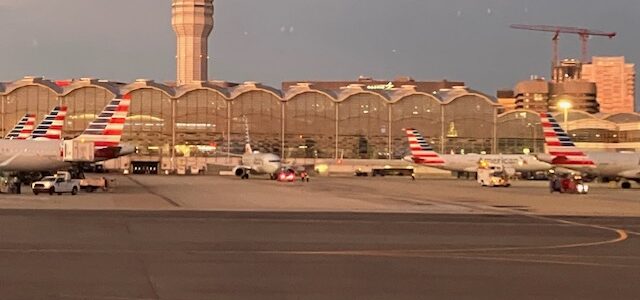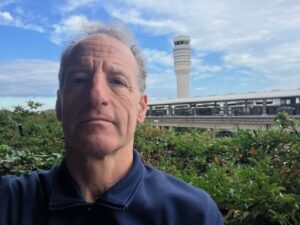
Helicopter and Regional Jet Crash at D.C.’s Reagan National Airport
The recent crash of American Airlines Flight #5342 that was involved in a crash with an Army helicopter took the lives of many innocent victims near Washington D.C.’s Reagan National Airport (“DCA”) reminds us of what IS and what is not unique about this popular airport.

Contrary to what the current President alleged shortly after the air disaster, without evidence, that diversity initiatives (“DEI”) had undermined air safety, it was likely human error and the challenging air space around our Nation’s Capitol that were likely causes. Air injury lawyer Doug Landau has flown in commercial and private aircraft in and around the several DC area airports, and knows first-hand that you cannot fly over: the Pentagon, CIA headquarters, the White House, the Capitol and many other sensitive sites in his backyard. Plus, National Airport is subject to the noise ordinances of nearby Arlington and Alexandria, Virginia, such that flights end at 10:00 PM and do not resume until 7:00 AM the next morning. Adding to the complexity of flying into the airport closest to the Capitol of the free world is the fact that National Airport has shorter runways than nearby Washington Dulles International Airport (“IAD). That is why the supersonic jets (the Concord SST), the space shuttle and other long-haul routes (i.e., Australia, China, Africa) depart from Dulles, and not Reagan National.
Let week’s National Airport crash involved 67 passengers on the American Airlines commercial jet and 4 crew members on the Army helicopter. The impact caused both aircraft to sink into the Potomac River, killing all aboard both aircraft, making it the deadliest single U.S. air crash in over 20 years. The 9 PM crash put one of the world’s most tightly controlled airspaces into chaos and search crews and wreckage retrieval teams snapped into action less than a mile from the White House, U.S. Capitol and the Pentagon. As Doug Landau and the ABRAMS LANDAU team had represented the families of the American Airlines pilot, AA senior flight attendant, passenger & Pentagon welder who lost loved ones in the 9/11 terrorist attack, lawyer Landau is especially sensitive to the environs around our Nation’s military headquarters.
According to news reports, the crash involved a regional jet coming from Wichita, Kansas and an Army helicopter which was on a training flight. The commercial jet was preparing to land. At the same time, the UH-60 Black Hawk helicopter, based at Fort Belvoir, Virginia, was carrying 3 soldiers in the DCA airspace. It was a clear night, and several minutes before the Canadian-made Bombardier CRJ-700 series twin-engine jet was to land, Reagan National Airport air traffic controllers asked Flight #5342 if it could use a shorter runway. The pilots gave the AOK and the Federal Air Traffic Controllers cleared the jet to land at DCA. Flight-tracking sites show the plane adjusted its approach to the new runway in conformance with the amended flight landing plan.

Like a skilled orchestra conductor, an air traffic controller must coordinate any aircraft of different speeds, sizes, shapes and characteristics in order to make sure landings and take offs proceed efficiently and safely, and that gate turnover flows smoothly. Less than 30 seconds before the mid-air crash, an air traffic controller asked the Army helicopter crew if they had the commercial jet in sight. The Army pilot responded in the affirmative. The DC air traffic controller made another radio call to the black hawk moments later, apparently telling the Army copter to wait for the small commercial jet to pass.
There was no reply from the Army black hawk and the American Airlines jet crashed.
The twin-engine jet’s radio transponder stopped transmitting about 2,400 feet (732 meters) short of the runway, roughly over the middle of the Potomac River, which separates Washington, D.C. from Virginia at that point. The commercial jet was found upside-down in 3 sections in the shallow water. The Army helicopter’s wreckage was also found in the river. National Traffic Safety Board (“NTSB “) investigators, who routinely investigate aircraft crashes, have recovered the cockpit voice recorder and flight data recorder from the plane.
This crash reminds us that as safe as air travel is currently, and as well run by the Metropolitan Washington Airport Authority (“MWAA”) that accidents happen, unsafe decisions are made and injury and death can result. If you, or someone you care about has been injured in an airline injury or airport event, and there are questions about what to do, please call us at 703-796-9555, or e-mail, as there are strict legal time limits to these cases and evidence can be erased or disappear if prompt action is not taken by experienced legal counsel, like the air injury team at ABRAMS LANDAU, Ltd.
